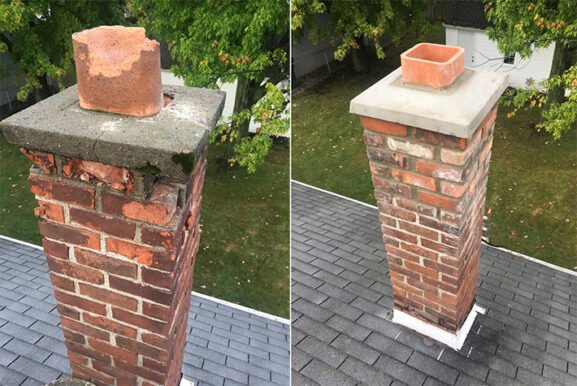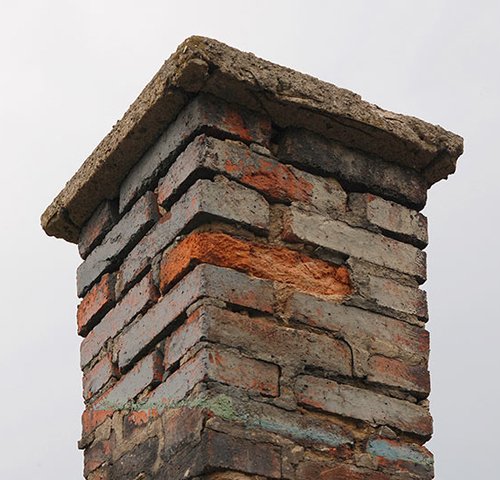How to Understand and Estimate Chimney Repair Cost Near Me
Key Takeaways
- Chimney repair costs can vary widely depending on the type of damage and your location
- Common repair needs include fixing leaks, cracks, mortar joints, or damaged caps
- Getting a local inspection helps determine accurate repair estimates and safety risks
- Regular maintenance can lower repair costs and extend the life of your chimney
Why Chimney Repair Costs Vary So Much
When you start looking into chimney repair costs near you, it’s easy to feel overwhelmed by the range of prices. Homeowners might see estimates anywhere from $150 for a simple cap replacement to over $4,000 for major structural repairs. The reason for this wide gap is simple — every chimney is different, and so are the problems that can arise.
Your chimney’s age, size, materials, and exposure to weather all influence repair costs. A brick chimney in a snowy climate will face more wear and tear than a metal flue in a dry, temperate region. In many cases, the only way to get an accurate estimate is to have a professional inspect the structure on-site.
The Most Common Types of Chimney Repairs
Understanding what types of repairs you might need will help you make more informed decisions. Here are some of the most common chimney repairs and what they typically cost:
Cracked or Spalling Brickwork
This is one of the most visible signs of chimney damage. Water can seep into the masonry, freeze, and cause bricks to crack or fall apart — a process called spalling. Repairing brickwork usually involves tuckpointing or replacing bricks. Local rates typically range from $300 to $1,200 depending on how much area is affected.
Chimney Crown and Cap Repairs
The crown and cap sit at the top of the chimney and help keep out rain, animals, and debris. When either is damaged, water can seep in and cause internal damage. A basic cap replacement might cost $150 to $300, while crown repairs could reach $1,000 or more if there’s extensive cracking.
Flashing Replacement
Flashing is the metal seal that connects your chimney to the roof. If it’s rusted or poorly installed, water can leak into your attic or behind your walls. Replacing flashing typically costs between $300 and $800, depending on the complexity of your roof and chimney setup.
Flue Liner Repair or Installation
A flue liner protects the interior walls of your chimney and helps improve ventilation. If the liner is cracked or deteriorating, it can become a fire hazard. Relining costs can vary widely — from $1,000 for stainless steel inserts to over $3,000 for custom ceramic liners.
Smoke Chamber Parging
If your smoke chamber (the area just above the fireplace) has rough surfaces or cracks, it may need parging — a process of smoothing it with a mortar coating. This helps with smoke flow and safety. This service typically costs between $500 and $1,500, depending on the level of repair needed.
The Impact of Location on Chimney Repair Costs
If you’ve ever Googled “chimney repair cost near me,” you’ve probably noticed that prices differ depending on your region. Labor rates, permit fees, and material costs all vary based on where you live. For example, chimney repairs in New York or New Jersey are often more expensive due to higher labor costs and older housing stock that requires more careful handling.
Local climate is another factor. Homes in the Northeast, for instance, are more likely to experience damage from freeze-thaw cycles, heavy snow, and humidity. All of these environmental stressors mean more frequent maintenance and potentially higher repair bills.
If you’re curious about regional repair trends, the HomeAdvisor Cost Guide offers a helpful starting point for average chimney repair costs in various U.S. cities.
Why You Should Schedule a Local Inspection First
While national averages are useful for ballpark estimates, a local chimney inspection is the best way to get a true sense of what your repairs will cost. Licensed chimney professionals in your area understand the regional building codes, weather-related risks, and typical damage patterns.
An inspection will also uncover hidden problems like interior liner cracks, moisture damage, or missing mortar joints that you wouldn’t notice from the ground. Most companies charge between $100 and $300 for a level 1 inspection, and it’s often a wise investment. It helps you avoid unnecessary repairs while prioritizing essential fixes.
How Maintenance Can Help Lower Future Costs
Routine chimney maintenance is one of the easiest ways to avoid large repair bills down the road. A small crack today can turn into a costly structural issue within a year if it goes untreated.
Annual cleanings, regular inspections, and sealing treatments help reduce moisture infiltration — one of the leading causes of masonry decay. If you live in an area with harsh winters, consider scheduling a maintenance appointment before and after the cold season.
Keeping your chimney well-maintained not only protects your home but also improves heating efficiency and air quality. And most importantly, it helps you avoid emergency repairs that tend to be more expensive.
What to Ask Before Hiring a Chimney Repair Pro
Finding a reliable contractor is just as important as understanding the cost. When comparing local chimney repair services, keep these questions in mind:
- Is the company certified by the Chimney Safety Institute of America (CSIA)?
- Do they carry insurance and offer warranties on their work?
- Will they provide a detailed written estimate after inspection?
- How long have they been operating in your area?
These questions help ensure you’re hiring someone who understands the specific challenges that affect chimneys in your region. Avoid companies that quote prices over the phone without seeing the chimney firsthand. Reputable contractors will always perform a proper assessment before giving you a quote.
When It’s Time to Take Action on Chimney Repairs
Waiting to repair a damaged chimney can lead to costly consequences — both structurally and in terms of home safety. Whether you’re dealing with crumbling mortar, a leaking cap, or a damaged flue, it’s important to address the issue before it escalates.
Delaying repairs can result in water damage, poor ventilation, or even carbon monoxide leaks. These aren’t just comfort issues; they pose real safety risks to your household. Getting estimates from professionals in your area and scheduling a timely inspection can prevent these issues from worsening.
You don’t have to wait until your chimney shows obvious signs of wear to take action. In fact, preventive maintenance and early repair work are often more cost-effective than full-scale restorations down the line. A proactive approach gives you more control over repair costs — and more peace of mind in the long run.

